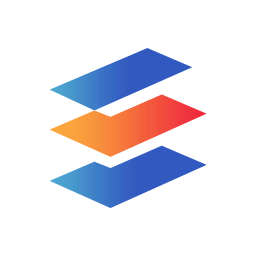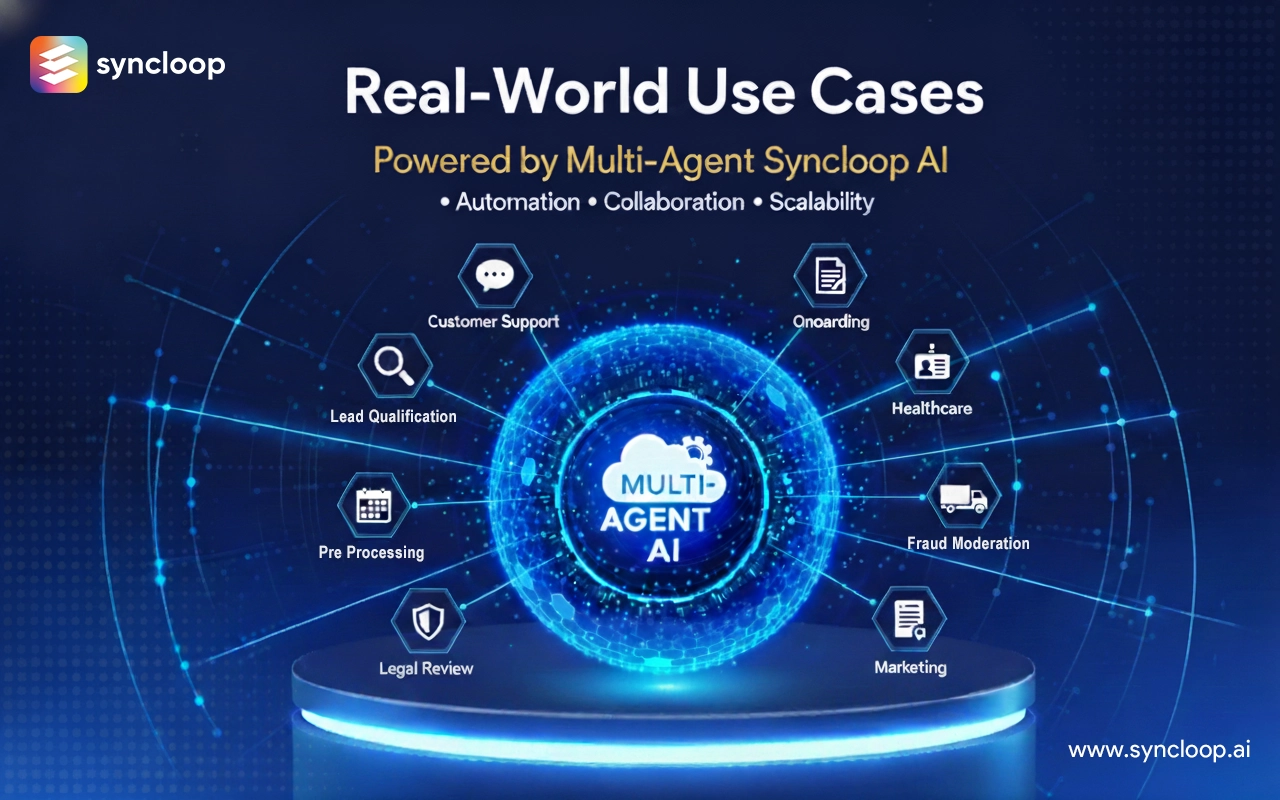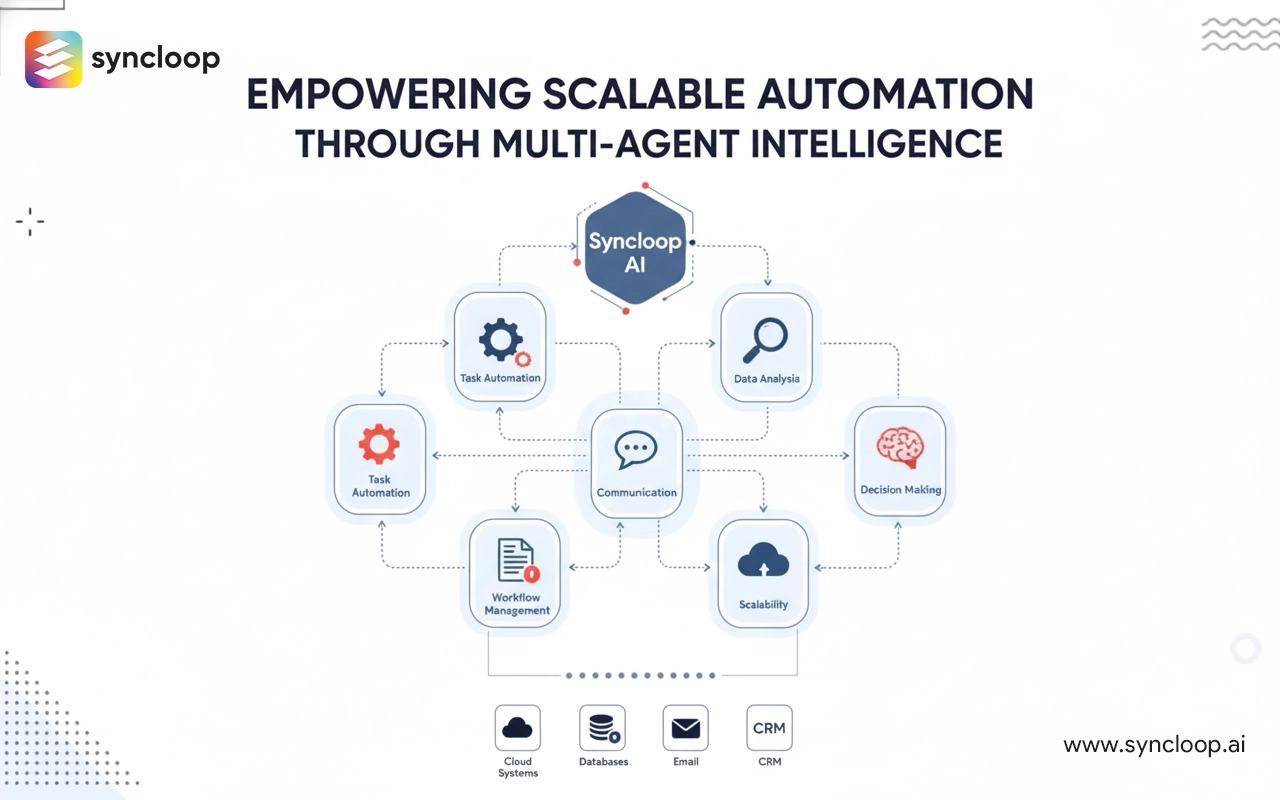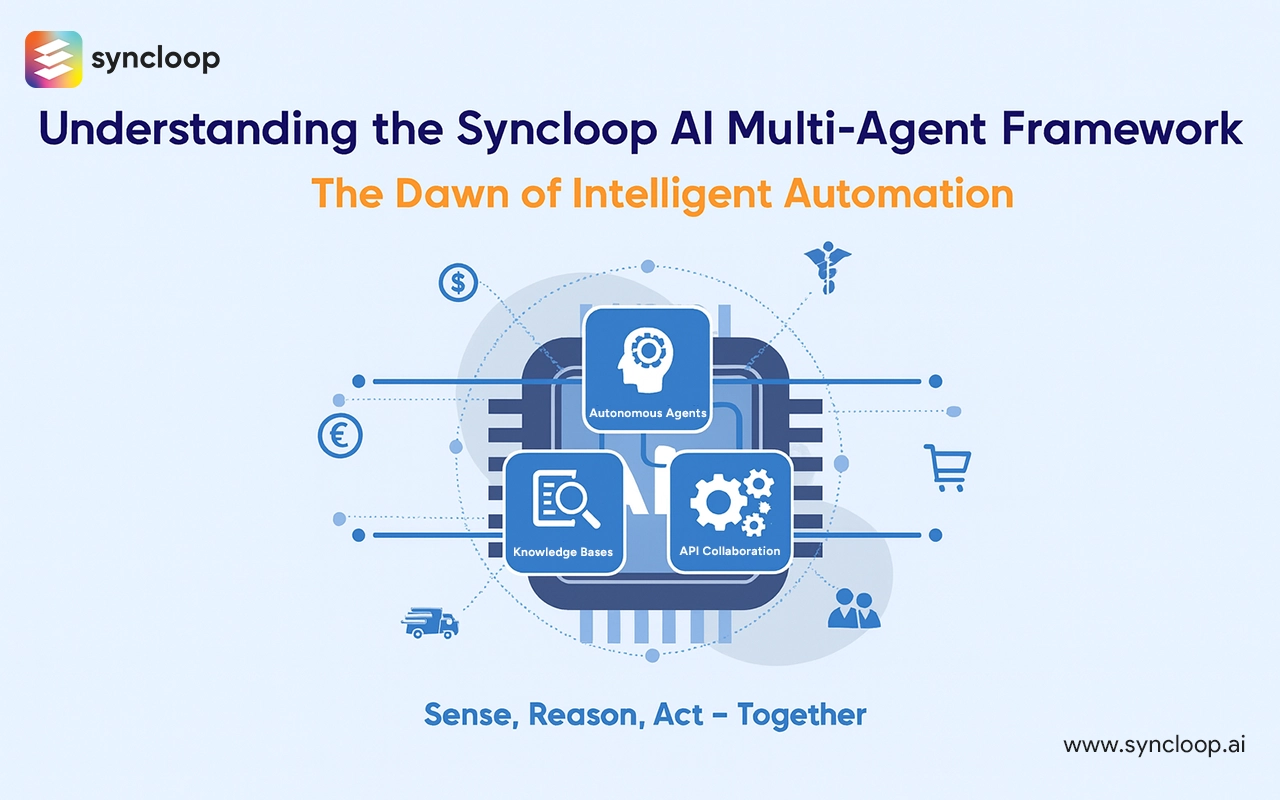Why Multi-Agent Systems Are the Future—and How Syncloop AI Delivers It Today
Posted by:
Donna R. Book | March 18, 2025

Introduction
Automation has come a long way—from simple
macros and scripts to intelligent bots and digital workflows. But as business
systems grow more complex and expectations for speed and personalization
increase, traditional automation solutions are hitting their limits. They’re
fast, yes—but often rigid, fragile, and unable to adapt to change.
Enter Multi-Agent Systems (MAS)—a new
paradigm in intelligent automation that mirrors how real-world teams work:
independently, collaboratively, and dynamically. Instead of a single automated
process trying to do everything, you deploy multiple AI agents, each with a
specific role, working in coordination to achieve a goal.
And while this might sound like a
futuristic idea, it’s already here—thanks to Syncloop AI.
Syncloop AI is a platform designed to
deliver the power of multi-agent systems today. With built-in AI capabilities,
seamless integrations, and an intuitive low-code interface, it enables
businesses to automate workflows that are smart, adaptable, and scalable.
In this blog, we’ll explore why multi-agent
systems are the future of automation—and how Syncloop AI makes that future
accessible right now.
What Are Multi-Agent Systems?
A multi-agent system is a group of
intelligent, autonomous agents that work together to perform tasks or solve
complex problems. Each agent has a distinct role, can make decisions, and
communicates with other agents to coordinate actions.
Think of it like a team at work:
- One person gathers data.
- Another analyzes it.
- Someone else makes a decision.
- A fourth person communicates the result.
This is how people collaborate—and that’s
exactly how multi-agent AI operates in a digital environment.
The key benefits of MAS include:
- Decentralization: No single point of
failure; each agent operates independently.
- Parallelism: Tasks can be handled
simultaneously, improving speed and efficiency.
- Adaptability: Agents can adjust their
behavior based on changing inputs or environments.
- Collaboration: Agents share data,
context, and decisions in real time.
This is a dramatic shift from traditional,
linear automation—which often breaks when something unexpected occurs.
Why Businesses Need Multi-Agent Systems
Modern businesses are no longer static.
They're dynamic, constantly shifting environments with diverse systems,
fast-changing data, and growing customer demands.
A few examples of what companies are
dealing with:
- Real-time customer interactions across
multiple channels.
- Distributed data across CRM, ERP,
support, and marketing platforms.
- Frequent changes in products, services,
and regulations.
- The need for hyper-personalized
experiences and rapid decision-making.
Traditional automation systems can't keep
up. They're too rigid, too centralized, and too dependent on developers for every
small change.
Multi-agent systems solve these challenges
by creating intelligent, modular, and flexible workflows that evolve as your
business does.
How Syncloop AI Brings Multi-Agent
Systems to Life
Syncloop AI is built from the ground up to
support multi-agent automation. It’s not an add-on feature—it’s the core of the
platform.
Here’s how Syncloop delivers the MAS
promise today:
1. Agent-Based Workflow Architecture
Syncloop allows you to assign different
agents to specific roles in a workflow. Each agent can perform tasks, respond
to events, and interact with other agents in real time.
2. LLM Integration for Intelligence
Syncloop integrates seamlessly with large
language models (LLMs) like GPT, enabling agents to understand natural
language, generate content, make decisions, and even summarize
information—bringing human-like understanding to automation.
3. Real-Time Collaboration Between
Agents
Agents don’t just work in isolation. They
communicate, share data, and coordinate decisions across workflows. This allows
for smart handoffs, adaptive behavior, and fully dynamic process flows.
4. Low-Code Interface
Syncloop makes it easy for business users
to create, configure, and manage agent-based workflows with a visual,
drag-and-drop builder. You don’t need a team of developers to build smart
automation anymore.
5. Scalability and Modularity
Add new agents to existing workflows, reuse
agents across different processes, and scale horizontally without starting from
scratch. Syncloop grows with your business.
Real-World Example: Multi-Agent System
in Action
Let’s look at how a multi-agent system
works in a real-world scenario using Syncloop AI.
Use Case: Automating the Employee
Onboarding Process
In a traditional setup, onboarding is
handled manually by HR, IT, and admin teams. But with Syncloop’s MAS:
- Agent 1 validates new hire forms and
extracts data.
- Agent 2 creates accounts in internal
systems (email, HRMS, Slack).
- Agent 3 coordinates with IT to assign
devices and software.
- Agent 4 sends welcome emails and
documents.
- Agent 5 monitors task completion and
escalates delays if needed.
Each agent works independently but shares
updates in real time, ensuring the onboarding is smooth, accurate, and
completed without manual follow-ups.
That’s not just automation. That’s
collaborative, intelligent automation.
Advantages of Adopting Multi-Agent
Syncloop AI
Here’s what companies gain when they
embrace Syncloop’s multi-agent approach:
- Speed: Agents work in parallel, reducing
process time dramatically.
- Accuracy: Built-in validation and AI
models reduce human error.
- Adaptability: Agents respond to changing
inputs, conditions, and workflows without needing full reconfiguration.
- Efficiency: Teams spend less time on
manual coordination and more time on strategy.
- Scalability: You can handle more
workflows, systems, and users without complexity spiraling out of control.
More than anything, it allows businesses to
build systems that act more like people—collaborative, autonomous, and
intelligent.
Moving from Monolithic to Modular
In many companies, automation is still
built like a giant monolith: one system or bot is responsible for every action,
and if anything breaks, the whole flow is disrupted.
Multi-agent systems, like those in Syncloop
AI, break this down into modular components. If one agent fails or needs to be
updated, the rest continue operating. You can test, replace, or optimize
individual agents without rewriting everything.
This makes Syncloop more resilient, agile,
and future-proof.
Why the Future Belongs to Multi-Agent
Systems
Just like cloud computing replaced
on-premise infrastructure, and APIs replaced batch file transfers, multi-agent
systems are the natural evolution of automation.
In a world where businesses need to move
fast, adapt constantly, and manage complex systems, only multi-agent frameworks
offer the flexibility, intelligence, and scalability required.
Syncloop AI is already delivering on that
promise—making advanced, collaborative automation accessible to every
organization.
Getting Started with Syncloop AI
Adopting Syncloop AI doesn’t require a
massive overhaul. Start with one use case:
- Automate ticket triaging.
- Simplify invoice approvals.
- Enhance lead qualification.
- Streamline onboarding.
Deploy a few agents. Test, refine, and
expand. As you grow, your agents grow with you. You’re not building static
processes—you’re building a living, learning automation ecosystem.
Conclusion
The future of automation is intelligent,
collaborative, and flexible—and it belongs to multi-agent systems. While many
businesses are still trying to patch together rigid tools and workflows, those
who adopt platforms like Syncloop AI are already ahead of the curve.
By enabling agents to work together, make
decisions, and adapt in real time, Syncloop delivers the power of MAS
today—turning ordinary workflows into intelligent, interconnected systems that
drive real business outcomes.
If you’re ready to move beyond traditional
automation and into a smarter, scalable future, Syncloop AI is your next step.
Back to
Blogs







